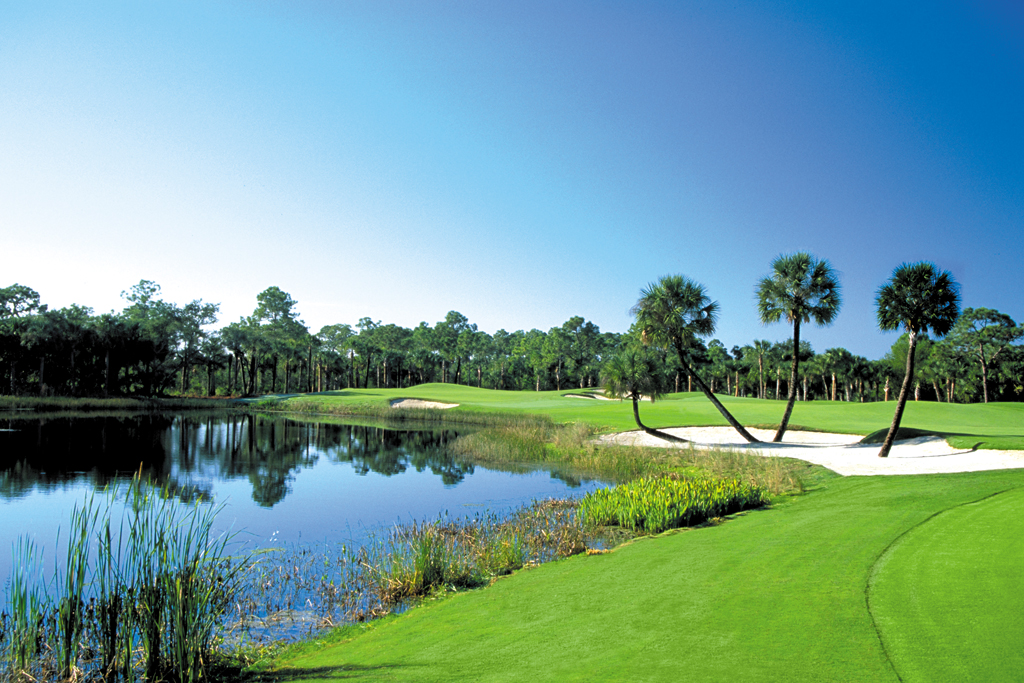Golfweek Features Jerry Pate Design and Teeth of the Dog - Read More
We posted recently about the role of microclimates in commercial landscape architecture, but did you know that bodies of water create microclimates? In fact, they have a major influence on the way a landscape organically functions. Today, we’re going to cover the ins and outs of how it happens, so you can better understand one part of your landscape architect’s perspective for your property.
What Are Microclimates?

First, let’s recap with some insights from our previous post on the subject …
Merriam-Webster defines a microclimate as “the essentially uniform local climate of a usually small site or habitat.”
In terms of commercial landscaping, you can think of it like this: Outside of a children’s hospital, there is a small park. It contains a bench with trees that provide shade right above it, a patch of flowers next to a stretch of green space to play or picnic, and a swing set at one end. This park is surrounded by concrete—sidewalks and pathways leading back into the building or out to the parking lot—and the soil was disrupted extensively during construction of the complex. On top of all that, its variances in shade and sun exposure will impact plantings, as will the fact that rainfall is distributed differently in a green space enclosed by concrete than it would be in a wild landscape.
So, voilà, you have a microclimate!
Why Can Bodies of Water Create Microclimates?

Within the above example, we mention rainfall, but not a body of water. However, the latter is also an important factor to consider.
The key to the impact bodies of water have on microclimates lies in temperature and humidity. You see, the way that water reacts to heat is much different than the way a hard surface will. Land quickly absorbs and traps heat, but with water, this is not so.
Water both loses and gains heat slower than the surrounding land. In doing so, it helps to bring moisture into the air, building a more humid microclimate. This is why the temperature out on a lake or the ocean often feels cooler than the temperature on the land you took the boat out from. Evaporation and condensation result in a cooling, but humidity-crafting effect. Interestingly, water also loses heat more slowly, so if temperatures are high enough for long enough that it does gain greater heat, it will retain that for longer than land will.
In scientific terms, this all happens because, as an article from USGS explains, “Water has a high specific heat capacity—it absorbs a lot of heat before it begins to get hot.” And, as the same article notes, “The high specific heat of water has a great deal to do with regulating extremes in the environment.”
The Impact This Has on Your Landscape Architecture

What does this all mean for you? Well, in the context of a commercial landscape, your “body of water” is likely going to be a small pond. Even though it might not seem like a major amount of water, it will change the conditions of the environment around it.
Because it will often result in a slightly cooler space, this could be a great area near which to establish a small tree canopy to cover seating. On especially hot days, a bench near the pond might be the respite people in your landscape need.
You’ll also want to consider the plantings you select. Some varieties will thrive near water, owing to the moisture in the ground and the humidity in the air. But others will struggle. Remember that choosing plantings to suit your microclimate will often help you avoid major maintenance in the long run!
When you take microclimates into account, you will be better able to work with your landscape architect on a design that looks beautiful, takes environmental stress off of surrounding natural areas and is less expensive and arduous to maintain. That sounds like a win-win-win to us!
To learn more about what goes into landscape architecture, browse our library of blog posts.

